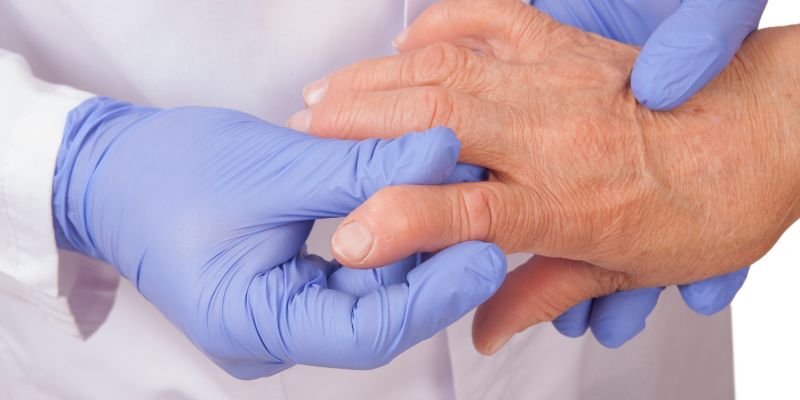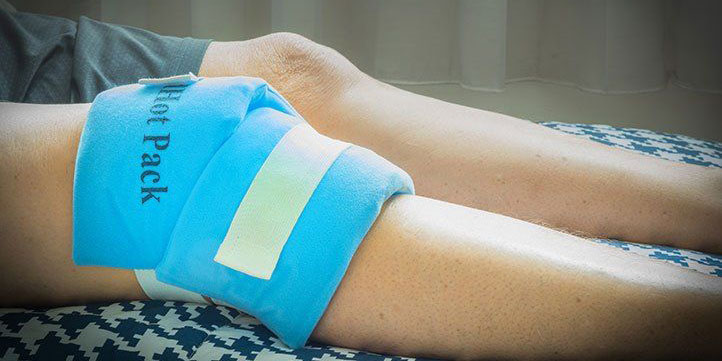Many people in the world suffer from the autoimmune illness of rheumatoid arthritis. Rheumatoid arthritis is characterized by inflammation, pain, and stiffness because of the destructive nature of certain cells in the body. Severe instances have been connected to issues including heart and lung damage, anomalies in finger joints, and tumors around joints.
The progression of joint destruction caused by rheumatoid arthritis can be slowed or stopped with the right treatment. Modern breakthroughs in treating rheumatoid arthritis have shown to be quite beneficial, especially when the condition is recognized early and treated aggressively. Rheumatoid arthritis treatment often consists of disease-modifying antirheumatic medications (DMARDs) and nonsteroidal anti-inflammatory medicines (NSAIDs).
Corticosteroids like prednisone that are given in low doses are another possibility. Most people with rheumatoid arthritis report significant improvement after undergoing these treatments. Joint replacement surgery can help people with severe illnesses live more comfortably and actively when disability sets in.

Best Treatment Options for Rheumatoid Arthritis
Joint inflammation and pain relief, joint function optimization, and joint destruction and deformity prevention are therapeutic targets for rheumatoid arthritis (RA). Combinations of medication, weight-bearing exercise, illness education, and rest constitute standard treatment protocols.
To a large extent, the success of a treatment is determined by the patient's health profile. This category includes illness severity, number of affected joints, age, general health, work environment, disease management practices, patient compliance, and knowledge. Some of the best treatment options for RA disease are as follows.
Disease-Modifying Antirheumatic Medicines
One of the most popular treatments for RA is disease-modifying antirheumatic medicines. These medications halt the disease's progression and protect the healthy tissue near the joints from damage. Many people who have just been diagnosed with RA are put on DMARDs, although they are only a moderately powerful medicine and not the gold standard therapy.
Drugs like methotrexate and hydroxychloroquine are examples of them. Anti-inflammatory medications like these often function by interfering with certain immune system mechanisms.
Their full efficacy may not be realized for some time, and in the interim, nonsteroidal anti-inflammatory drugs (NSAIDs) or steroids may be necessary for symptom management. The typical course of treatment for these sorts of drugs involves starting with a low dose and gradually increasing it.
Steroid Therapy
While waiting for more sophisticated treatments to take action, RA patients may benefit from a course of steroid therapy with a substance like prednisone. Steroids can be administered orally, intravenously, or intramuscularly and can decrease inflammation and inhibit the immune response; they may be used to bring down acute swelling or unexpected flares.
While steroids may provide temporary relief, they can have dangerous adverse effects, especially when used excessively. Osteoporosis and digestive problems are only two of the many unwanted outcomes. If your doctor decides to give you steroids to help with your RA symptoms, they will likely have the plan to wean you off of them or switch you to something else.
Surgical Replacement Of Joints
A severely injured joint (often the hip or knee) is removed during joint replacement surgery and replaced with an artificial joint. Surgery is not the first line of defense, but it does have its place. While this treatment can help RA patients with pain and mobility, it is extremely complex, has a lengthy recovery period, and needs dedication to post-operative physical therapy.
Certain cases may need surgical intervention. Patients who cannot take DMARDs or biologics or who have a severe illness, such as ruined joints, will require surgical intervention to restore the damage in their tendons or joints, or perhaps joint replacement.

Treatment From Biologics
Meds like adalimumab (Humira) and tofacitinib (Remicade) are examples of biological response modifiers. They function similarly to disease-modifying antirheumatic drugs (DMARDs) but with a more targeted approach. According to some doctors, they can prevent inflammation in certain molecules, thereby halting the progression of arthritis.
Biologics have the potential to be more successful and tend to act more quickly than other treatment choices, but they are also more costly and come with an increased risk of infection. They can't be taken orally and are only administered by injection or infusion.
Meditation And Relaxation
Besides making you more susceptible to disease and injury, stress can make it harder to get enough rest, alter your eating habits, and discourage you from engaging in healthy behaviors like exercise, all of which can exacerbate RA's painful symptoms.
Mindfulness and meditation can help teach the brain to handle stress more productively, and practices like yoga can help train the body to move in ways that reduce joint pain and stiffness. Your RA won't go away if you start doing yoga or meditating for ten minutes daily, but you may notice a slowing of the disease's course if you adopt a more peaceful lifestyle. We could all use less stress, so trying can't hurt.
Exercise
Pain from RA might force patients to slow down on their daily activities, which can only make their symptoms worse. The muscles and joints might tighten up and weaken from lack of use if you don't use them. The symptoms of RA can be reduced with the aid of an activity program designed by a qualified physical or occupational therapist.
The RA patient's exercise routine should include low-impact aerobics and activities focusing on flexibility, strengthening, and body awareness. Range-of-motion exercises may preserve and restore joint mobility, and endurance can be boosted through activities like walking, swimming, and cycling.
Conclusion:
Rheumatoid arthritis is the most prevalent autoimmune form of chronic arthritis. The severity and duration of symptoms can vary widely, making early diagnosis and treatment all the more important. Symptoms of RA include weariness, joint pain, edema, and stiffness.
Without treatment, individuals risk developing irreversible damage to their joints, which can lead to incapacity. As there is currently no cure, therapy plans are designed to minimize the long-term impact of the inflammatory disease.




